What could be good about paying a $40 late fee? Common sense tells us it would not be fun. Still, the case of Reed Hastings shows that one can make a fortune from it. As you may have guessed, Reed Hastings is the lucky man who founded Netflix… and once forgot to return ‘Apollo 13’ from Blockbuster on time.
All kidding aside, the demand for video streaming services is ever-increasing nowadays. Many entrepreneurs want to know how to create a video streaming website like Netflix.
However, we can not hide the fact that running a video streaming business is cost-intensive. You are playing high stakes when you have such a big target in mind. But you cannot win this game if you do not take a risk.
This article will examine Netflix's effect and discuss how to build a streaming service. We will also discover the main steps and tools needed to build a Netflix clone and how much it takes to make a site like Netflix.
Live streaming trends, statistics, and forecasts
Before exploring how to build a video streaming website like Netflix, consider the crucial stats shaping the live-streaming industry. The video streaming market was estimated at USD 106.83 billion in 2023 and is expected to grow at a CAGR of 21.5% from 2024 to 2030.
Nowadays, advanced AI technologies have become a commodity, greatly benefiting the streaming industry. Thanks to AI, aspects such as voice-overs, scriptwriting, and editing has seen dramatic improvements. Various technologies offered by AI are important when you consider how to make a streaming website.
Moreover, the industry continues growing thanks to several trends that nurture viewers’ interest.
Capitalizing on existing franchises. Relaunching old elements with new hues sparks interest and helps streaming platforms run. For example, Jack Ryan is a character from Tom Clancy’s novels. Using this franchise, Amazon earned $788 million from the movies alone. Disney won 150 million subscribers after launching The Mandalorian content based on Star Wars.

Source: Amazon
Competing with social media. Video streaming services also thrive on social media platforms. For example, YouTube boasts many channels with 260 million subscribers. Also, success came to Facebook Watch and its counterpart IGTV.
Short-form videos have gained momentum. They are a valuable genre in today’s fast-paced world, where the free time span is short. So, streaming platforms launch short-form video projects, which gain popularity and outdo traditional long-form series. Netflix’s Special and Amazon’s Funny Or Die are prominent examples of videos lasting 12-17 minutes.
The rise of new niche streaming services. While Netflix provides various shows and series, small streaming platforms focus on specific niches. Thus, they provide exclusive experiences for their target audiences. Crunchyroll for anime, fuboTV for sports, and many more appear and grow rapidly.
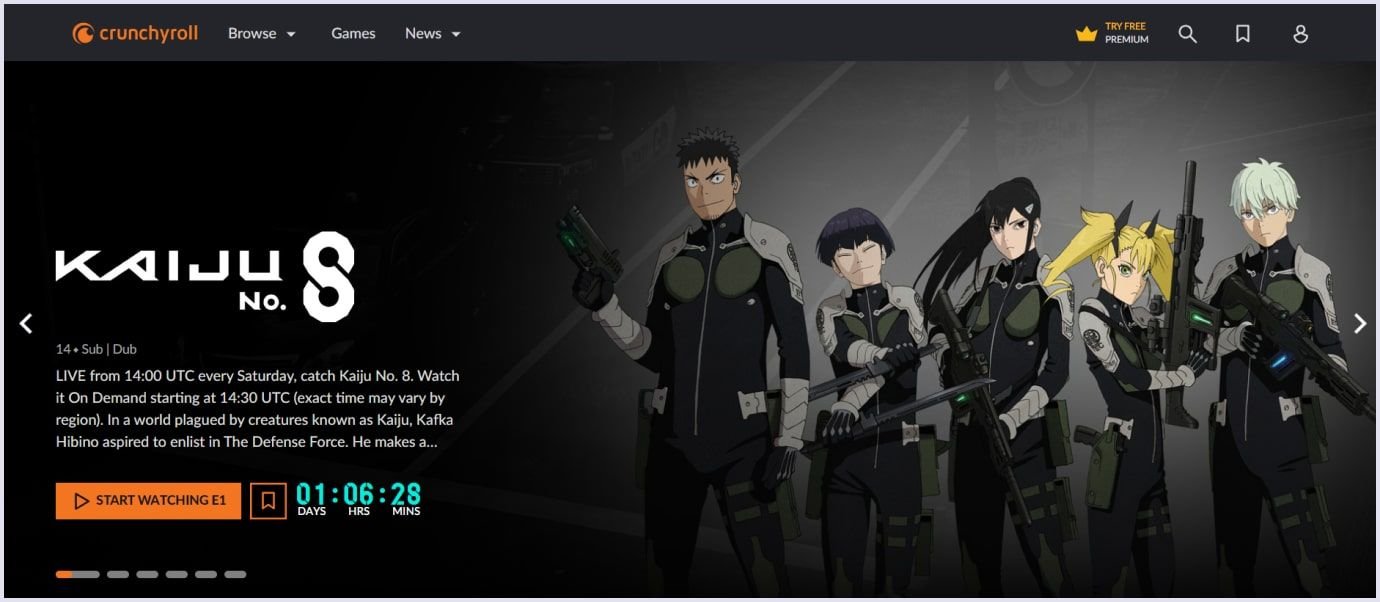
Source: Crunchyroll
What lies behind a service like Netflix?
Netflix story
Back in 1997 in California, a small movie-rent-by-mail company that was to beat their competitors to the draw was created. The company was named “NetFlix”, referring to the “Net” (or Internet) of “flixes” (movies in slang).
At first, the company used a pay-per-rental method. Users browsed the Netflix website for DVD-movies they wanted to rent. Then, they placed an order and waited for the movie to be delivered to their doors. The return was carried out the same way as the delivery – by post.
Netflix co-founders Reed Hastings and Marc Randolph chose the possibility to rent DVDs online as the key feature of Netflix. And they got an excellent point, back in 1998. Fortunately for Netflix, not everybody thought this way in the late 1990-s.
1999 was particularly important for Netflix. This year, the company chose to switch to the subscription-based business model.

Source: Reddit
Since 2000, Netflix has begun using the collected big data to provide users with personal recommendations. Thus, Netflix entered the new millennium empowered by big data analysis and a whole new set of capabilities it offers.
The subscription model helped Netflix gain even more users. The main reason was that viewers could keep the DVDs as long as they wanted. To get a new movie, customers needed to return the previous one.

Source: Wayback Machine
In 2004, the Internet entered a phase called Web 2.0. Thanks to the potential of high-bandwidth networks, transferring media via the Internet became so much easier. And Netflix decided to ride the wave of this phenomenon, inspired by the success of YouTube.
It sounds ridiculous now, but in 2005, you needed to let your Netflix chill overnight to download a couple of movies for you to stream. But Netflix did not stop there. In 2007, it launched an online video streaming called "Watch Now". This service allowed users to watch movies and shows on their PCs.
This way, Netflix started offering a SaaS (software-as-a-service) solution in 2007, which was not so widespread back then. Actually, not many business people were aware of the technology that is thriving nowadays. In 2025, building a SaaS product is highly popular among both startups and established enterprises. And the reason is quite simple—it pays off greatly.
Below, you can see how this video streaming website looked in 2007 when Netflix came into life.
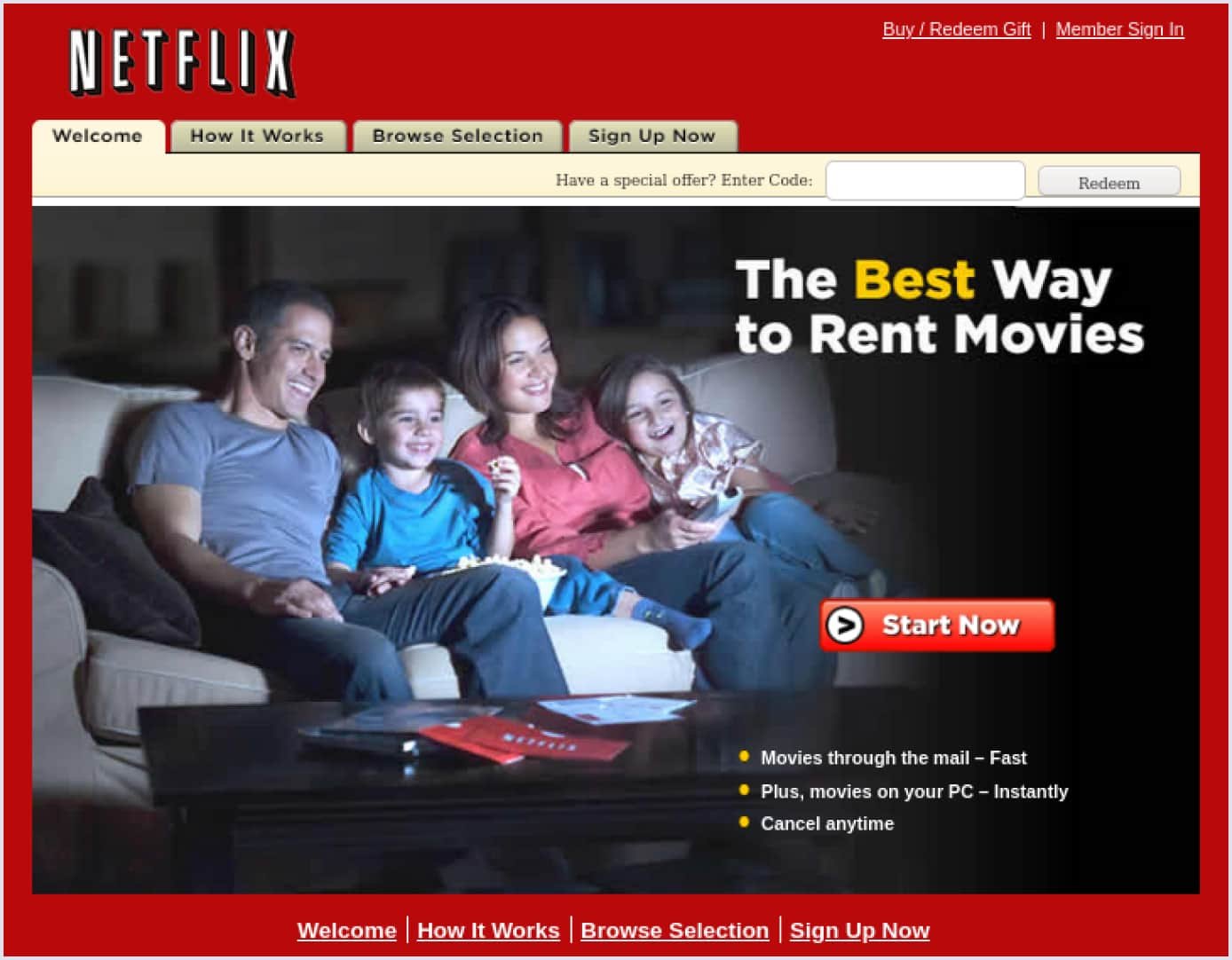
Source: Wayback Machine
That is how the story started for the video streaming service that now has over 280 million subscribers.
Business model
Business loves numbers, so let’s start with a quick overview of Netflix's business success.
In 1997, Netflix offered their customers 925 titles through the pay-per-rental model. Three years later, the company made a proposal to the leading movie rental Blockbuster to buy Netflix service at the price of $50 million. But then Blockbuster’s CEO John Antioco decided to ignore that offer, considering it a joke.
In the next three years, Netflix reached 1 million subscribers. The company decided to start making its own content and not rely on its potential video-streaming rivals.
Thus, Netflix’s business strategy evolved from the pay-per-rental model to a non-linear one, based on the services the company offers. The year 2024 was particularly important for Netflix. Its market capitalization experienced a 51.36% rise, finally having the same stats as in 2021. As of November 2024, Netflix's market cap is $322.54 billion.
You may wonder: what helped Netflix achieve such popularity? The company implemented the right trends to gain the upper hand in the video streaming domain.
What are the trends that have become a distinctive feature of Netflix? Let’s find out.
Data-driven approach
Netflix knows what content viewers want, when, and on what devices. Many things have changed since the launch of Netflix, but the company strives to adapt its business model to the changing market.
Even when Netflix was only a movie rental company, it used big data analysis to predict what movies its customers would like. Numbers of views, feedback, and IMDb ratings – all that matter for Netflix’s rating system.
The company created a recommendation algorithm that suggests relevant titles to its customers. It was previously stated that around 80% of Netflix users watch movies or series offered by this algorithm. But nowadays, it is even more than that, as Netflix personalizes even the movie thumbnails that appear on their customers’ feeds. Here’s how the system works:
On-demand accessibility and comfort
TV broadcasting is not on-demand as the television decides what and when to be broadcasted. With subscription video services, users can use the service 24/7.
It is not just a coincidence that Netflix's mission statement contains the following words:
Our members control what they want to watch, when they want it, with no ads, in one simple subscription.
Thus, Netflix users do not want to waste their time searching for a movie to watch. Viewers are making themselves comfortable and stream the video content they want on any device in high resolution.
Cost-efficiency
Netflix creative says: ‘Cancel anytime’. In such a way, the company is bringing content consumption closer to the viewer. Also, it makes their experience personalized.
To conclude on what lies behind the success of the Netflix website, let’s take a look at its business canvas:

Source: BMI
How does video streaming work?
Netflix is the largest and most popular subscription-video-on-demand (SVoD) service. Experts predict that worldwide SVoD subscriptions will surpass 1.7 billion by 2027.
One of the main characteristics of this domain is that here, things change quickly. It applies to sociocultural tendencies as well as technological advancements. All this largely changes the way how to make a website like Netflix popular among viewers.
When you consider how to create a streaming website, the technology aspect plays a crucial part in its success. Simply put, video streaming is a process of splitting a video into small pieces and sending them through the Internet network. At the final destination, the video parts are reassembled on a user’s device and played as a continuous stream.
How to dive into the technical specifications of how to make a website like Netflix work? First, you need to understand the operating principle of a video streaming service. The main technical concepts here are codecs, container formats, and video streaming protocols.
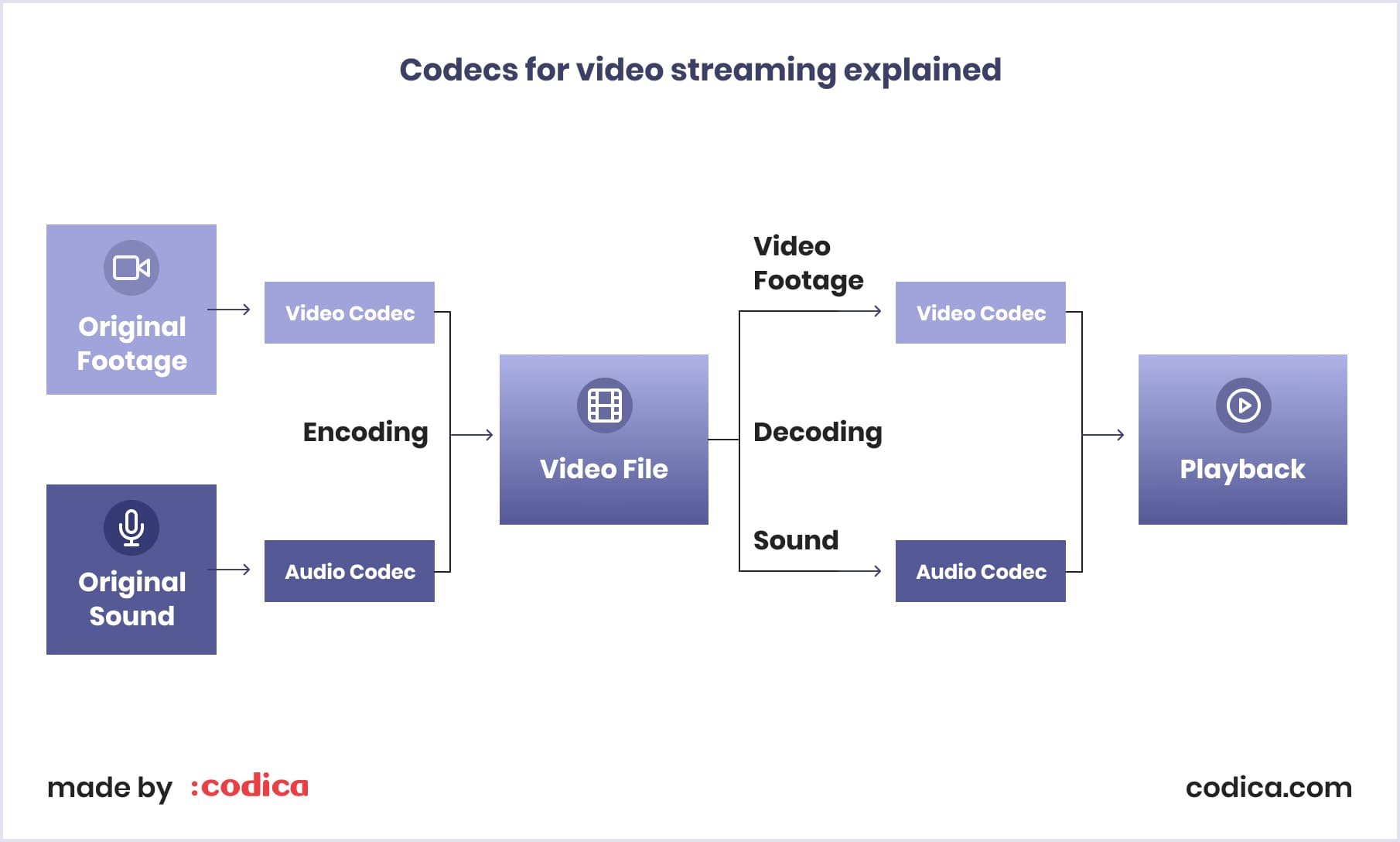
Video codecs are the software for encoding and decoding the video stream, with or without compression. The next term, container format, is widely referred to as a video file type, or wrapper. It allows fragmented data streams to be merged into a single file with metadata according to the video’s timing. When building a video platform, mind that most video formats do not support streaming.
Video streaming protocol is a delivery method that divides a video into small chunks and transfers them to a user’s device. There are many such protocols, with their pros, cons, and use cases:
- Real-Time Streaming Protocol (RTSP);
- Real-Time Messaging Protocol (RTMP);
- HTTP Live Streaming (HLS);
- HTTP Dynamic Streaming (HDS);
- Microsoft Smooth Streaming (MSS);
- MPEG-DASH.

How to create a video streaming website like Netflix?
Now you know about the magic in charge of making boring evenings enjoyable. So let’s find the peculiarities of building a video streaming service and what are the main steps you need to take to create a website like Netflix.
Define your niche and style
What should you do before digging into the technical specifications of building a Netflix clone? You have to crystallize your vision of the future service to be born.
Target audience
Do you want to create a website like Netflix that will satisfy the needs of all potential customers? It is an ambitious and praiseworthy goal. But, well, Rome was not built in a day. Someday, your service may become a new Netflix. But for starters, define your target audience.
To get a foothold in the market, you need to offer the content people want to see. People use video streaming websites to have fun, learn something new, or both. So, when planning how to create a video sharing website like Netflix that people will want to use, aim at the specific group and not at everyone.
According to the chosen audience, you need to plan the content you will stream and the UI (user interface) and UX (user experience) design. The main point when building a video platform is to make it as captivating as possible. You should create a user-friendly website and generate a continuous flow of content.
Content type
The competition between video streaming services is quite tough. Web-based video streaming technologies are rapidly evolving, and streaming services for entertainment seem to be a profitable product idea. But they are everywhere.
That is where some novelty could help. When planning how to make a website like Netflix, you can concentrate not only on the movies and series. You might look towards education, cybersport, or fitness themes. Also, these are combinable. For example, infotainment mixes learning with some fun.
Platforms that stream knowledge-based videos will become more popular in the near future. Nowadays, education is becoming a mandatory requirement for steady personal growth. In modern societies, getting new knowledge is vital for career success.
Let’s outline what niches you can occupy and how they are represented on the market.
Entertainment
Examples: Netflix, HBO, Hulu, Amazon Prime.
Content: The content here is presented with entertaining and amusing feature films and series. This content brought Netflix its initial success. As they say, ‘Netflix and chill.’ However, streaming platforms like Netflix or Amazon Prime contain not only entertaining content.

Source: Netflix
Infotainment
Examples: Discovery+, Magic Stream, CuriosityStream.
Content: Skill-sharing, documentaries, and non-scripted video content.

Source: Discovery Plus
Health & fitness
Examples: Obe, NEOU, AKT.
Content: Fitness and dance classes, workouts.
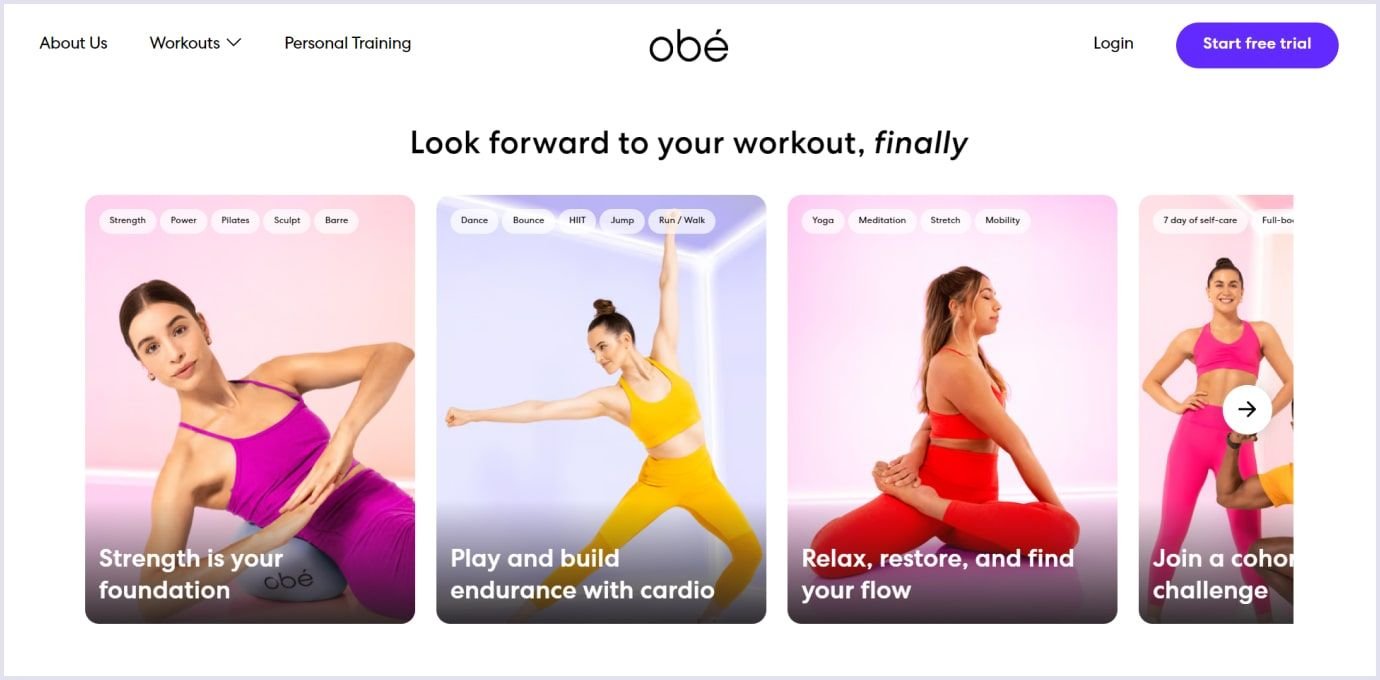
Source: obé
Sports & cybersport
Examples: Twitch, fuboTV, Dazn, ESPN+.
Content: Sports tournaments and events.
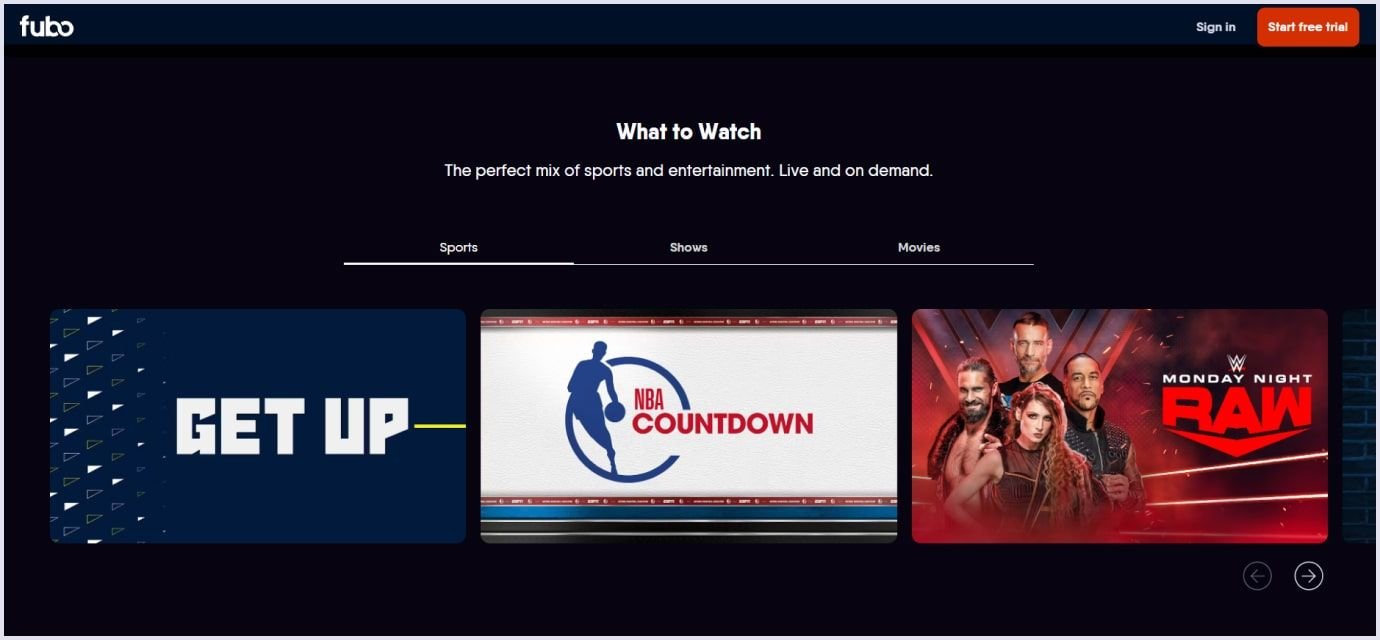
Source: fubo
Set content strategy
Are you producing the content, or do you already have the license for the video content? If so, you are very lucky because licensing expenses constitute the majority of the cost to make a website like Netflix.
When you are planning how to build a streaming service like Netflix, do not forget to deal with legal regulations. It is not recommended that unlicensed content be streamed.
Let’s move into the content part of the questionnaire on how to build a website like Netflix. The next question is: how do you find the content for streaming services? There are three ways you can obtain content licenses when you consider how to create a streaming website:
- Renting movies from the authorized distributor;
- Obtaining copyright permission from the holder;
- Creating the content.
The first two options imply that your role in the flow of content is to be a mediator between the owner of video content and customers. How can you make a unique selling proposition when you want to create a website like Netflix? Mind your approach and the niche you are in.
Now, let’s analyze each of the above options in detail to help you understand how to build a streaming service like Netflix.
Renting content
What is content renting all about? It minimizes the risks and expenses for both owners and customers. And here is why: The content owners will not need to care about the technical side of the distribution, and customers will get skinny bundles. These are bulk offers that give users access not only to the specific movie but also to the traditional TV bundle.
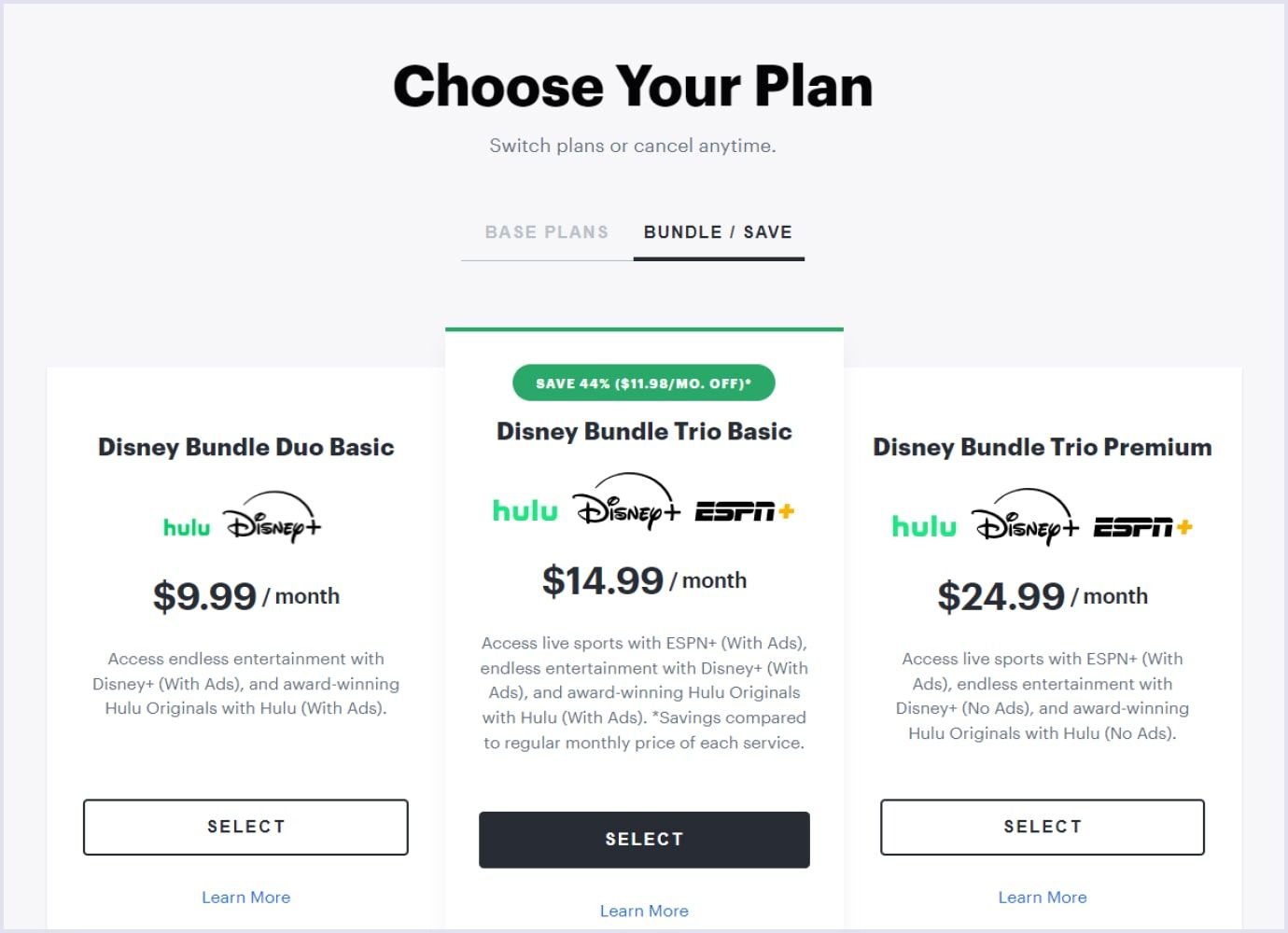
Source: Disney Plus
Skinny bundles are very common among video streaming services because they save customers’ money. These bundles provide more diverse and cheap viewing options. You can think of YouTube TV or Hulu, not Google Play or traditional TV cable providers.
Purchasing content licenses
What are the pitfalls of purchasing video content licenses? The thing is, some films or shows can be subject to exclusive distribution rights, meaning you cannot buy a lifetime license for that content. Besides that, owners may state geolocation restrictions and sell the licenses for certain markets.
So, all licensing agreements have their expiration date. However, it can be a good thing. When you stream a specific movie for a time, you can assess its popularity and think through the soundness of the idea to stream certain content.
For those who plan to rent a movie or series from an authorized distributor, we list two major distributors in the USA:
- SWANK Motion Pictures;
- Motion Picture Licensing Corporation.
Creating your own content
There is another option for those who already know how to build a streaming service like Netflix and get a sufficient audience. Since 2013, companies like Netflix or Amazon have added self-licensed video content to their libraries. Why do we stick to 2013? The reason is this year was marked by the release of Netflix’s first in-house produced series House of Cards.
Nowadays, Netflix’s original programming library includes over 3700 fiction, animation, and unscripted videos.
Self-created content is a great option for those who want to license their video content to other video streaming platforms. Such content has a monetization bonus that will help compensate the cost to make a website like Netflix.
Must-have features to create a platform for movie streaming
The functionality required to build a website like Netflix can vary according to the specific website needs. But these differences are not crucial. So, we can share a set of features that will help to create a Netflix clone video service of any type. What features do users expect on your video streaming site?
- User registration and profile. This functionality is a must-have for any streaming website. Also, here users can have a list of movies to watch.
- Advanced search system. This feature helps users browse the content effectively, using keywords like title, genre, director, etc.
- The admin panel is another crucial functionality when considering creating a streaming service. It helps manage streaming websites easily and quickly. There are many things to control when maintaining a streaming platform. That is where a customized admin panel can be of great help.
- The reviews/rating feature helps you assess the viability of your website content and improve user retention.
- Push notifications are particularly important as they integrate your offers into the daily lives of users.
- Subscription and payment gateway functionality hugely affects how users make their decisions. So the process of making purchases should be as simple and convenient as possible.
- Settings affect the viewers’ experience directly. So, it is necessary to allow customers to watch their favorite shows precisely how they want, control the volume, and choose the language, subtitles, quality, and other parameters.
These features are necessary to plan how to create a video streaming website like Netflix. However, there are some extra features you can consider.
- Content recommendation algorithm;
- Screen recording blocking;
- Offline mode support.
To conclude, we want to emphasize the customer-oriented approach for your streaming platform. When deciding how to build a streaming service like Netflix, the user experience should be primarily considered. You need to make your streaming website easy to use for your audience.

What tech stack is needed to build a website like Netflix?
What are the programming languages and tools that will fuel your SVoD (subscription video on demand) service? As for any custom software development project, you will need a back-end and a front-end part. The first one implements business logic, whereas the second one is in charge of your product's visual part.
There are several languages and frameworks that will help you build a video streaming website. Why cannot you use any programming language to solve this tech stack problem?
The point is, you can save a lot by using the powers of a specific technology that better suits your domain and project. As we know, the tech stack choice largely affects the cost to make a website like Netflix.
To begin with, let’s find out what tech stack Netflix is using.
To fuel the work of the Netflix service, the company uses the following programming languages:
- Java;
- JavaScript;
- Python;
- Kotlin;
- Swift.
Python is in charge of the security and support of machine learning to power the recommendation algorithm. Netflix uses the powerful backend set from Amazon: Elastic Computing (EC2), S3, RDS, EMR, and DynamoDB.
Netflix's user-friendly interfaces are made using the React library. The company also uses NodeJS and WinJS frameworks.
Mind that nowadays, Netflix is a giant company that deals with a significant share of global Internet bandwidth. That is why the current tech stack of this platform is not a template but an inspiration on how to create a video streaming website like Netflix.
So, let’s talk about the technology stack that will help you create a website like Netflix that your users will love to use.
Backend
When you build a Netflix-like website, backend is the backbone of your solution. The server-side component takes the chunks of video content and converts them into a suitable casting format.
Users will not see the back end of your streaming website, but it will build the core functionality of your service. So choosing a programming language for the backend is a crucial point in planning how to make a streaming website like Netflix. That is why you will need a powerful framework like Ruby on Rails, Node.js, C++, or Python.
For example, as per Stackshare.io, Hulu and Twitch are built with the use of Ruby on Rails, so we can make a conclusion that this framework is suitable for a streaming platform of any size.
Distribution
This component delivers the video content and associated data to your customers. If we are talking about a large number of users, content delivery networks (CDN) are a must to maintain the video-on-demand service properly.
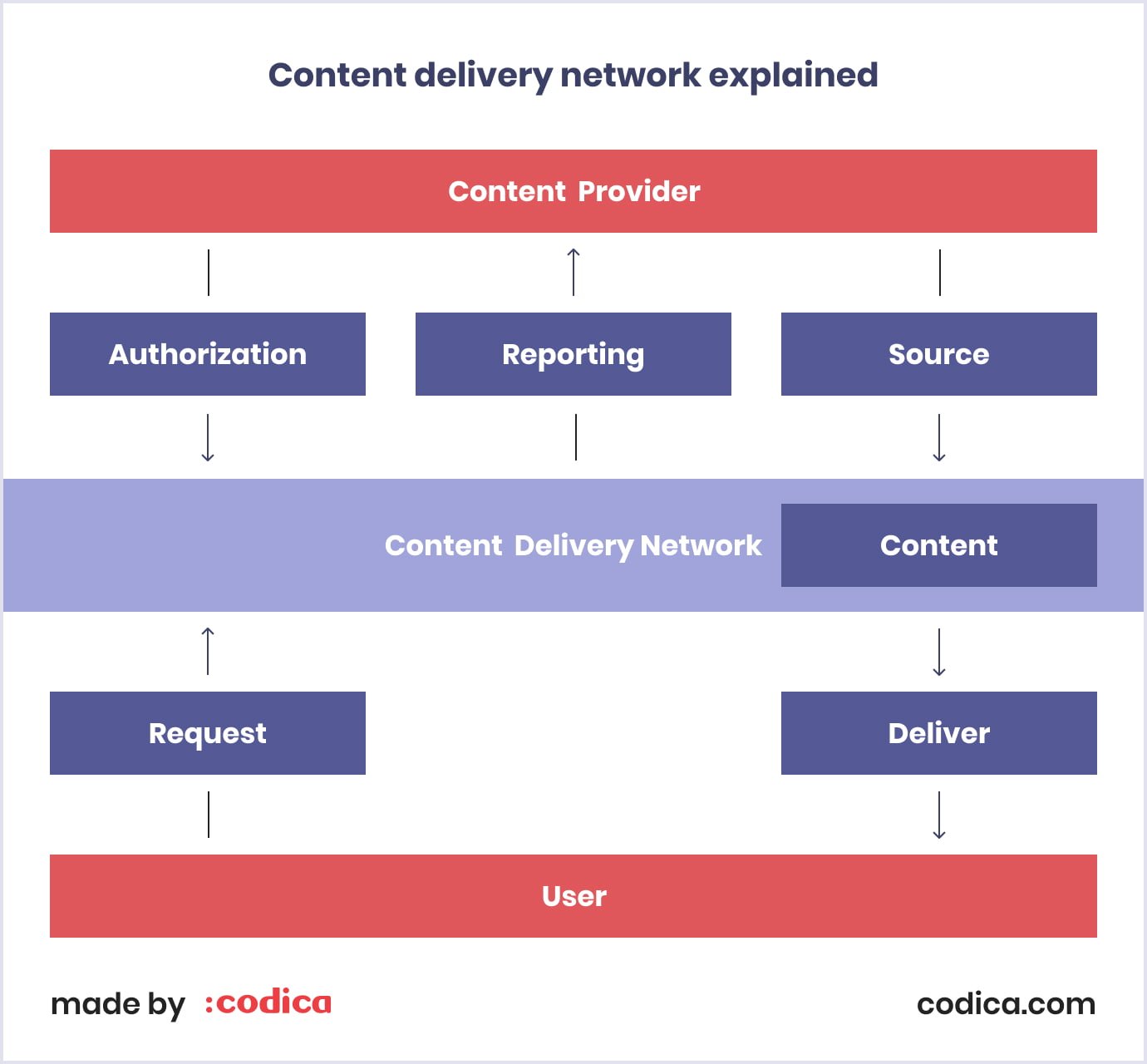
CDNs help improve loading speed, reduce network costs, and raise content availability. Without a doubt, these factors are crucial for handling all the nuances of how to make a website like Netflix robust and responsive.
The most common reliable solutions here are Akamai, Limelight, Cloudflare, and Amazon CloudFront.
Databases & storage
The next part of the video streaming service’s technology stack is the database component. Databases keep the information required for your web service to work.
We suggest using such databases as PostgreSQL or MySQL to build a website like Netflix.
As for cloud storage, it is also very important for a streaming service. Just imagine how big the amount of data that needs to be stored for a streaming website is. That is where cloud storage solutions can be of great help.
When you think about how to make a streaming website, choose reliable services. The most popular cloud storage solutions we can name are AWS, Azure, Google Cloud, and Akamai.
Frontend
The last but not least element of the tech stack when considering how to make a movie streaming website is client-side software. It determines the video to request, downloads, and reassembles the chunks of streaming files back into a format that will be shown to users.
For these purposes, you will need a JavaScript framework that meets the needs of your video streaming solution. React, and Vue.js frameworks will work fine when you need to build a website like Netflix.
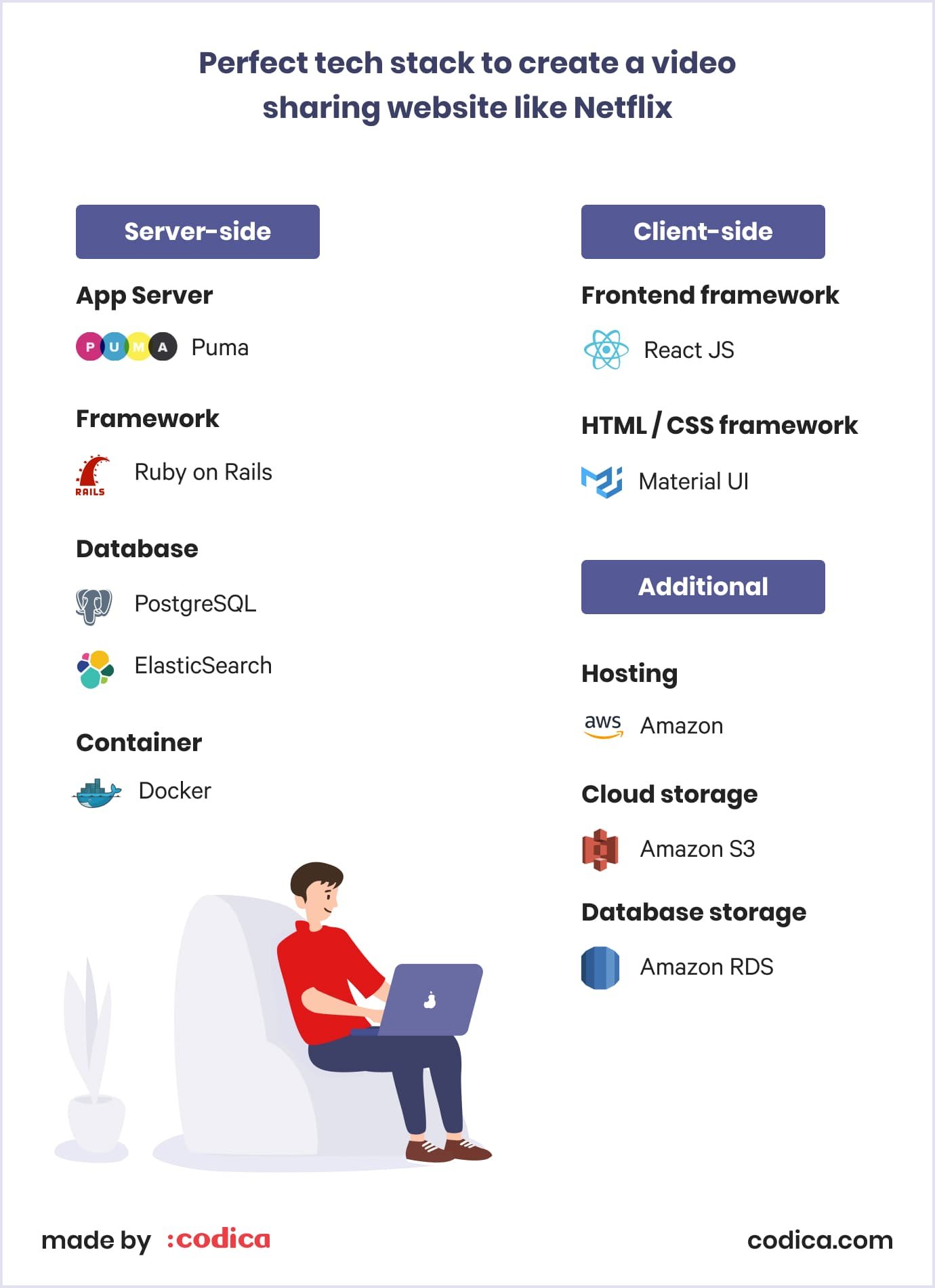
So, you need to get those components compliant and adjusted to your needs to keep the work of your video streaming solution flawless.
At Codica, we have a preferred tech stack that helps us build fast-loading, high-quality, and reliable web products in a short time-frame. Take a look at our case studies to see examples of products we have already delivered.
How to monetize your movie streaming application like Netflix?
Speaking of monetization, how are you going to capitalize on your platform? This is the essential part of learning how to build a streaming service like Netflix.
You can begin by creating subscription plans for users. For example, the Hulu platform offers four plans that you can find in the picture below.
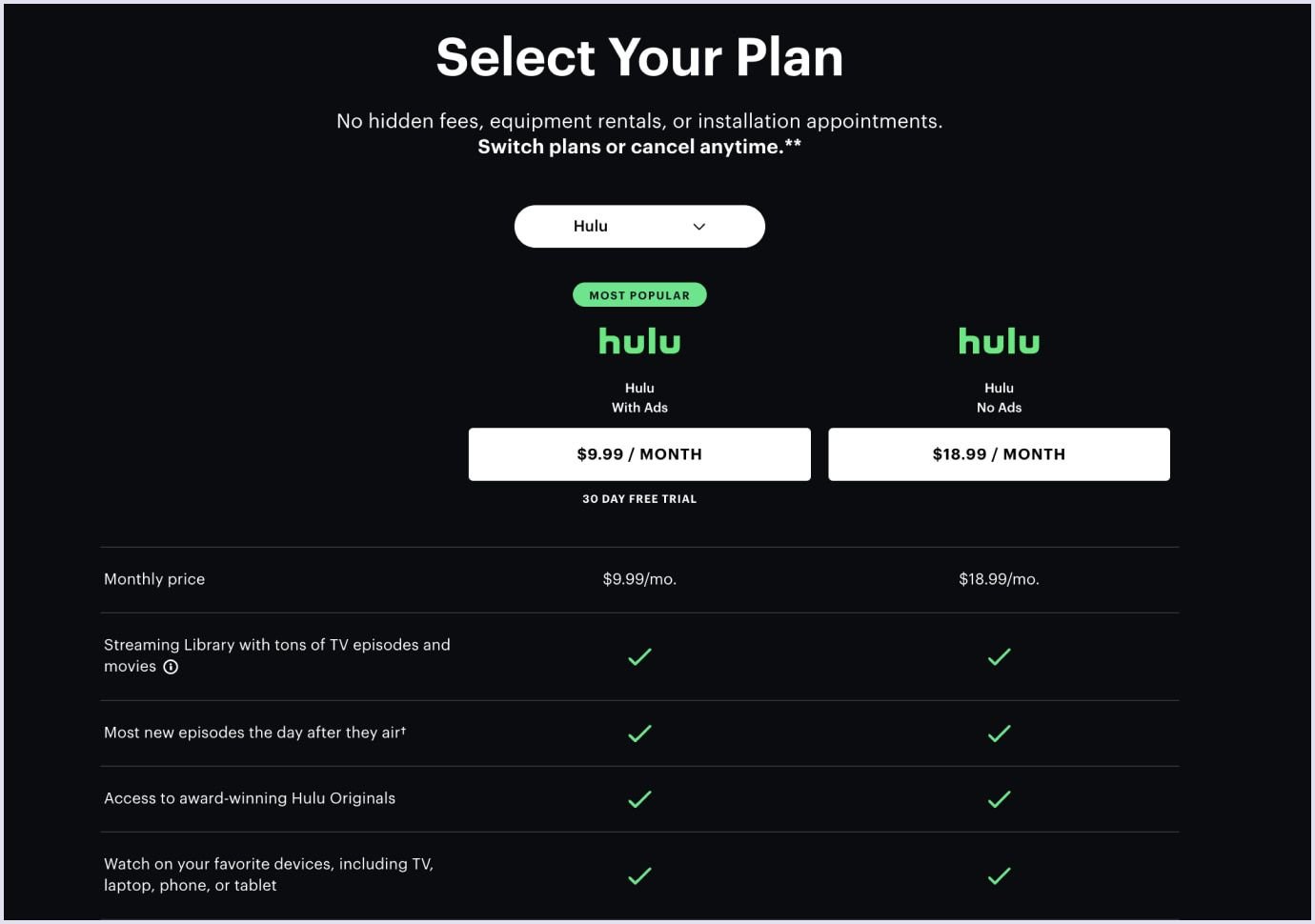
Source: Hulu
Another aspect of a streaming website’s monetization is the processing of repetitive payments. The top four payment gateways are:
- PayPal;
- Braintree;
- Stripe;
- Dwolla.
Now, we have learned what you should take care of when you want to create a website like Netflix and monetize it. Let’s move on to the most common revenue generation models.
SVoD (subscription video on demand)
Let’s begin with the subscription-based model. This monetization option is usually associated with streaming websites. And rightly so, as it strongly influences the nuances of how to start a website like Netflix.
Here, users get unlimited video content by purchasing monthly or yearly subscriptions to the specific plan.
AVoD (advertising-based video on demand)
Here, you get the revenue from your business partners by embedding their ads into the video content.
In this model, you do not ask your users to pay anything, but instead, they need to watch unskippable ads. Many customers do not want to pay for watching videos online. That is why AVoD services are highly popular. But other viewers can be irritated by advertising. For this reason, you can combine this model with SVoD one, like Hulu.
Examples of streaming services that use ads are as follows:
- YouTube TV;
- Hulu;
- Prime Now;
- DirecTV Now;
- The Roku Channel;
- Apple TV;
- ESPN, and others.
This model is highly profitable if you have a large number of users.
TVoD (transactional video on demand)
This model is also called pay-per-view. Here, you can provide your users with content at a rental (download to rent, or DTR) or for owning (download to own, or DTO).
The first subcategory, DTR, implies that users buy pieces of content for a limited time for a small fee. The second subcategory, DTO, gives users lifetime access to specific content for a higher price.
Streaming services that adopted the pay-per-view model:
- Crackle;
- Hulu;
- Prime;
- DirecTV Now;
- The Roku Channel;
- Apple iTunes;
- Google Play, and others.
Hybrid
This model is becoming more and more common among businesses, and will be useful to those wondering how to build a site like Netflix.
Why do businesses opt for this model? The reason is that integration of more than one revenue-generating model helps you improve ROI, or return on investment. The hybrid model enables users to experience your video content before you ask them to pay.
As a great example of advertising on a streaming website, we can discuss the Hulu ads policy. The company offers many kinds of advertisements, such as:
- 15-30-second ads.
Advertisers can choose between 15-30-second ads; they can use whichever length best tells their story. Also, these ads can be interactive. Interactive ads show during users’ binge sessions. Users choose between watching a long-form commercial or binge ads to view the show with standard commercial breaks.
- 7-10-second slates.
A branded slate is a video shown before the video content that users want to stream. It is usually accompanied by the text: “The following program is brought to you with limited commercial interruption by
Cover story brand placement.
Such a method is very popular on video streaming platforms, being an interactive and efficient way to introduce a movie.
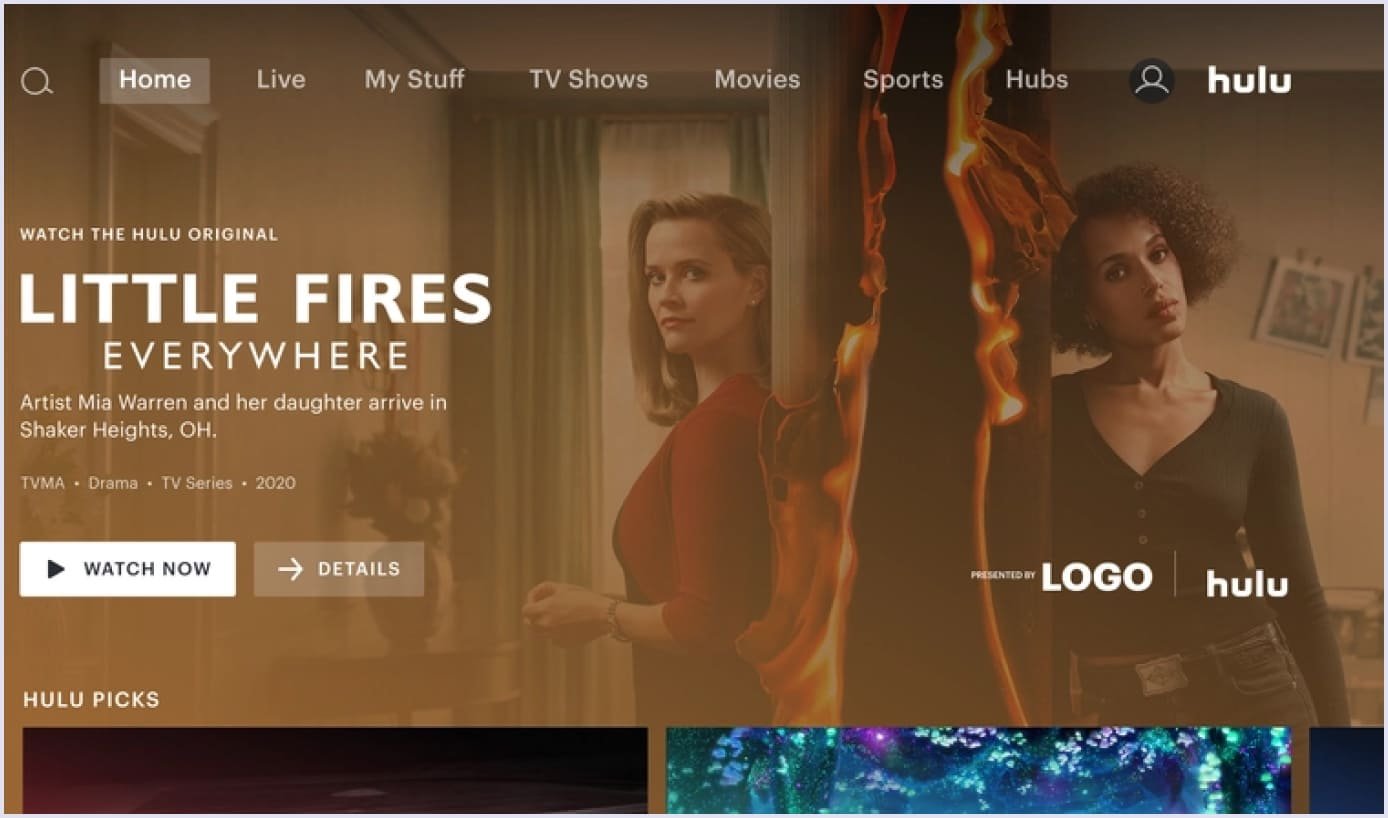
Source: Hulu
- GatewayGo.
GatewayGo combines traditional video ads with personalized offers into action-oriented prompts. It allows getting higher convertibility by shifting conversion actions from TVs to smartphones.
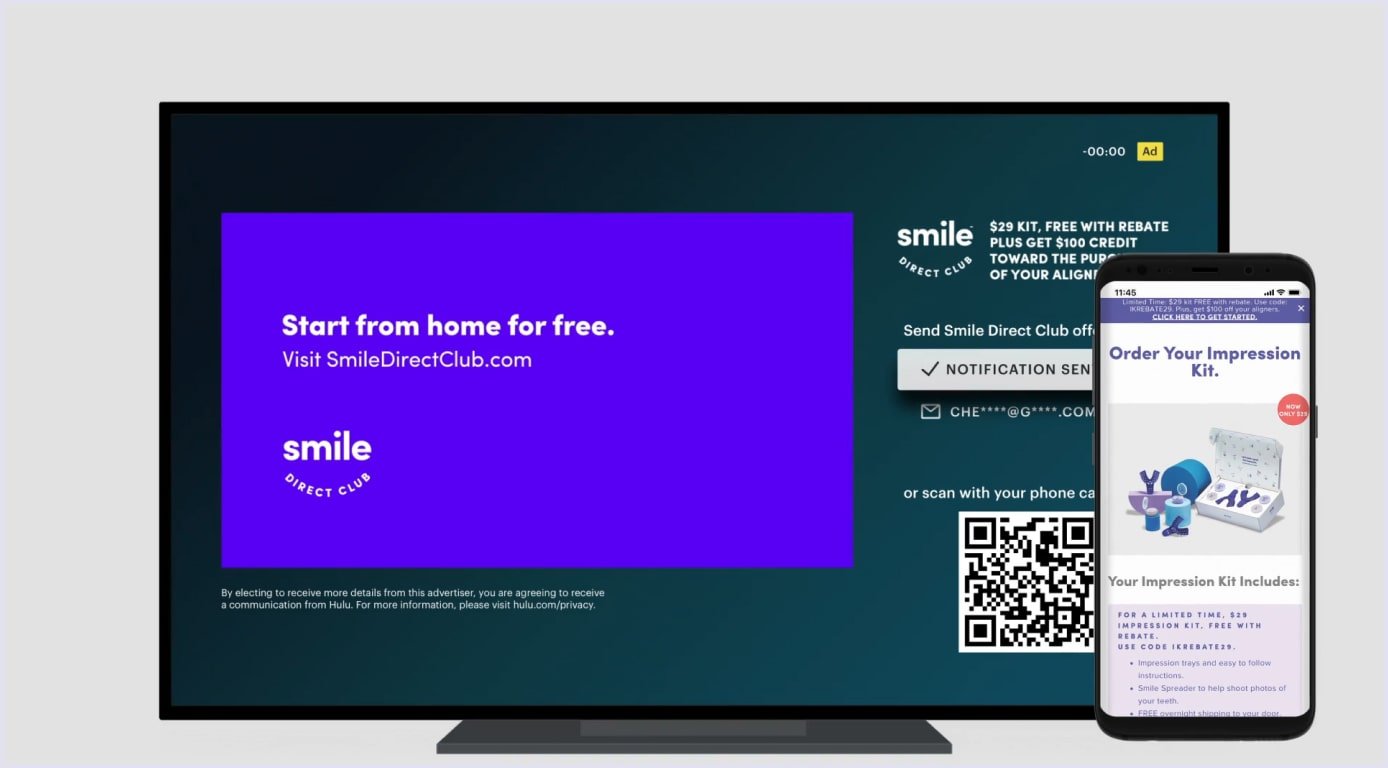
Source: Hulu
Also, some streaming services provide discounting, for example, student discounts or free trials.
Streaming services that offer 30-day free trials:
- Hulu;
- Amazon Prime Video;
- YouTube Premium;
- Showtime;
- Sundance Now;
- CBS All Access;
- Acorn TV, and others.
Summing the monetization options, we recommend that you do market research and think it through. Also, mind that you can target multiple models and test them to maximize the profit.

How much does it cost to develop a Netflix-like platform?
We have already discussed how to create a video streaming website like Netflix. So we can now proceed to the question of how much does it take to make a site like Netflix.
The main aspect that influences the cost of your future platform is the set of features that you want to implement. Your choice of software provider for your service development also influences the cost. One more thing to consider is the software development approach.
The numbers we will operate here are based on the average Eastern European web developers’ rate. As the table shows, the Netflix-like website development will cost you around $83,000 for a minimum viable product or first version.
| How much does it take to make a site like Netflix? | ||
| Features | Time, hours | Cost ($50/h) |
| Design | ||
| UX development | 64 | $3,200 |
| UI development | 120 | $6,000 |
| Architecture | ||
| Project setup | 16 | $800 |
| DB structure | 32 | $1,600 |
| Integrations | ||
| Payment (Stripe or PayPal) | 64 | $3,200 |
| Main functionality | ||
| Authorization and security | 72 | $3,600 |
| User profiles | 42 | $2,100 |
| Payments | 24 | $1,200 |
| Home page | 64 | $3,200 |
| Search and filters | 96 | $4,800 |
| Reviews & ratings | 48 | $2,400 |
| Subscriptions | 64 | $3,200 |
| Notifications | 48 | $2,400 |
| Video player | 156 | $7,800 |
| Video library | 192 | $9,600 |
| Screenshot blocking | 32 | $1,600 |
| Wishlist | 54 | $2,700 |
| User member area | 124 | $6,200 |
| Admin panel | 124 | $6,200 |
| Non-development activity | ||
| Project management | 80 | $4,000 |
| Quality assurance | 96 | $4,800 |
| Code review | 48 | $2,400 |
| Total | 1660 | $83,000 |
How to start a website like Netflix: Summing up
We hope that our guide has helped you discover the video streaming industry, its rules, techniques, and the most inspirational cases. Now you know how to create a video streaming website like Netflix. Also, we found out how much does it take to make a site like Netflix. And you are ready to flex your fingers for your first crack at building your streaming service.
Are you looking for a skilled and reliable software development partner who can make a website like Netflix? We would love to help you!
Codica is a dedicated team that loves to create robust and user-friendly solutions. You can see it for yourself in our portfolio that we are proud to share with you. Please contact us to discuss your project idea and get a free quote.
